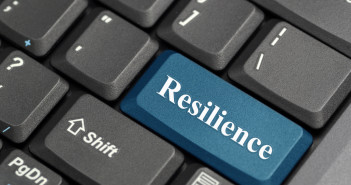
L&D’s wicked problem and how AI can help
No this wasn’t the title of the opening keynote at this year’s World of Learning…

No this wasn’t the title of the opening keynote at this year’s World of Learning…

As a learning leader do you spend two to three hours a week with your…

Editor’s note: Right now it feels like organisations are grappling with big contradictions. For example, working from home and working together in-person. Each business function will be grappling with contradictions but the question is: how do you manage those contradictions effectively? This article provides some answers.

Editor’s note: The team of learning designers at Emerald Works have compiled a list of the five learning theories that they use to underpin their work. It’s a useful list if you are involved in designing and developing learning resources.

Editor’s note: Here Nick Shackleton-Jones sets 24 principles for learning design based on his book How People Learn. His thesis revolves around the role of affective context and how that shapes our behaviour and what we learn.

Covid-19 has had a significant impact on pretty much most business practices as well as…

Editor’s note: How straightforward is it for workers to develop their careers, move sideways or move into a completely different role? I’ve been told I have transferable skills but throughout my career I have found it impossible to move sideways into roles outside of the sectors or disciplines I have previously experienced. This research reflects my experience. There is a challenge here for employers. How do you enable more workforce mobility?

Editor’s note: Diversity, giving voice, discomfort and representation. All are ingredients for an effective meeting, according to Bruce Daisley, author of Eat, Sleep, Work, Repeat. This short video shares some tips on creating better meetings.

Editor’s note: Nigel Paine takes a look at the work of Robert Kegan and Lisa Lahey and what they call ‘deliberately developmental organisations’. The three developmental stages for adults are an interesting frame through which to view how teams work.

Editor’s note: Why is skills development such a big challenge for L&D? Isn’t it the core role of L&D? It would seem not and in this article, international learning and organisational development director Simon Gibson reflects on the risks of not aligning current and future skills requirements with business strategy.

Editor’s note: Global head of L&D at Astra Zeneca Brian Murphy describes the company’s learning experiment to understand what would be needed for employees to create a learning habit.

Editor’s note: The Chartered Institute of Personnel and Development has produced a report examining the evidence of how how resilience is reinforced within organisations. The report highlights what builds resilience and the role managers play in helping staff to become more resilient.

Editor’s note: This piece of research explores what business leaders think about L&D. It’s always useful to hold a mirror up to the profession and this research does that. The fact that business leaders say they lack knowledge about L&D and its impact is telling.

Editor’s note: The term ‘hybrid working’ seems to be cropping up more and more. But what is it exactly? Is it a good thing? And will it serve to include some while others are excluded. This article provides some answers.

Editor’s note: This article suggests that allocating no-meeting periods in the working week can help collaboration and teamwork. Time without meetings provides employees with time to get work done and think through complex problems.
